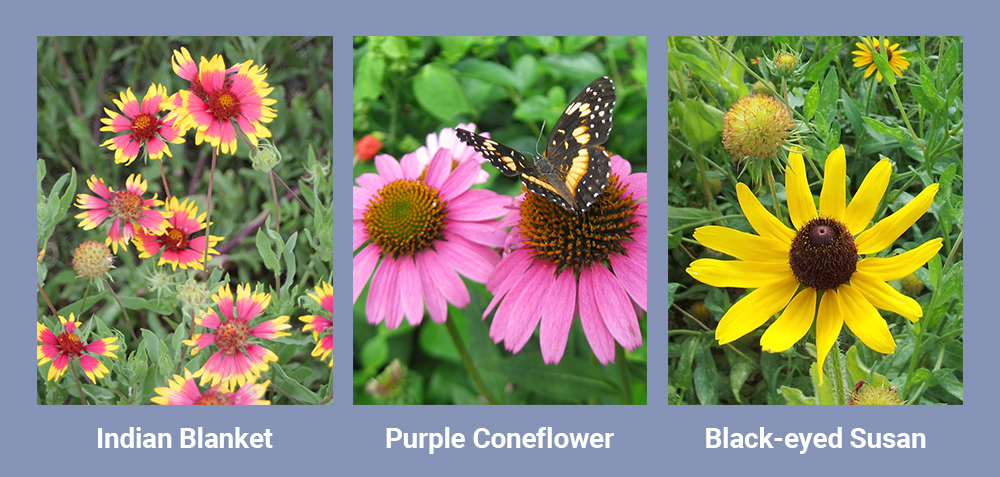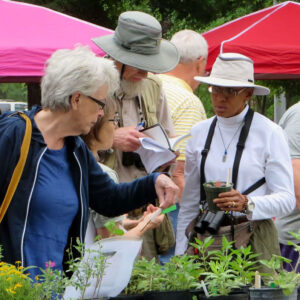A wildflower bed might be a great option for a sunny, well-drained spot in your yard. Sow seeds now for a splendid spring show later.
By Jerry Parsons, Ph.D.
Fall is the time to sow seeds for spring wildflowers. If you have a sunny, well drained area that you’re willing to leave less manicured, a wildflower bed might be a great option.
Invest some time in preparing your wildflower area and research your seeds carefully. Seed suppliers in our region are more likely to have mixes of seeds that will be successful in San Antonio.
- Clear the area of competing weeds. If you use contact herbicide, wait two weeks before spreading seeds.
- Cut any grass down in the area as close to the ground as possible.
- Rake the prepared area to create a shallow till. Deep tilling several inches down will only bring up competing weed seeds.
- Buy locally appropriate seeds and check the recommended planting date. The seeds must be spread early enough to give the plants time to get established and bloom before it gets hot.
- Spread the seeds, and if possible, roll them tightly against the soil.
- Water the seeds thoroughly. Once they begin to germinate, keep them moist.
- If there is no rain, lightly water newly sprouted plants every few days for three weeks.
- After bloom is finished the plants should be allowed to go to seed to get a repeat show next year.
- Not all plants will do well at reseeding. Pay attention to which ones do well and consider adding more of those seeds if you can get them.
SEED MIXES
Early fall planting seed mixes such as the Texas/Oklahoma wildflower mix include:
Texas bluebonnet; baby’s breath; Indian blanket; African daisy, scarlet flax, plains coreopsis; tickseed; clasping coneflower; lemon mint, black-eyed Susan; purple coneflower; Mexican hat; Drummond phlox; moss verbena; cornflower; corn poppy; rocket larkspur; toadflax; baby blue eyes; dwarf red coreopsis; ox-eyed daisy; showy primrose; California poppy; yarrow; yellow cosmos, and Texas paintbrush.

To attract butterflies and hummingbirds, plant this mix later in the fall or winter:
purple coneflower; cornflower; rocket larkspur; Indian blanket; Drummond phlox; scarlet sage; candytuft; yellow cosmos; sweet William; cosmos; wallflower; lemon mint; vervain; standing cypress; black-eyed Susan; shasta daisy; coreopsis; butterfly weed; sweet alyssum, and toadflax.

Wildflowers in Bloom features growing information, seed sources and an extensive photo collection for your perusing pleasure.


